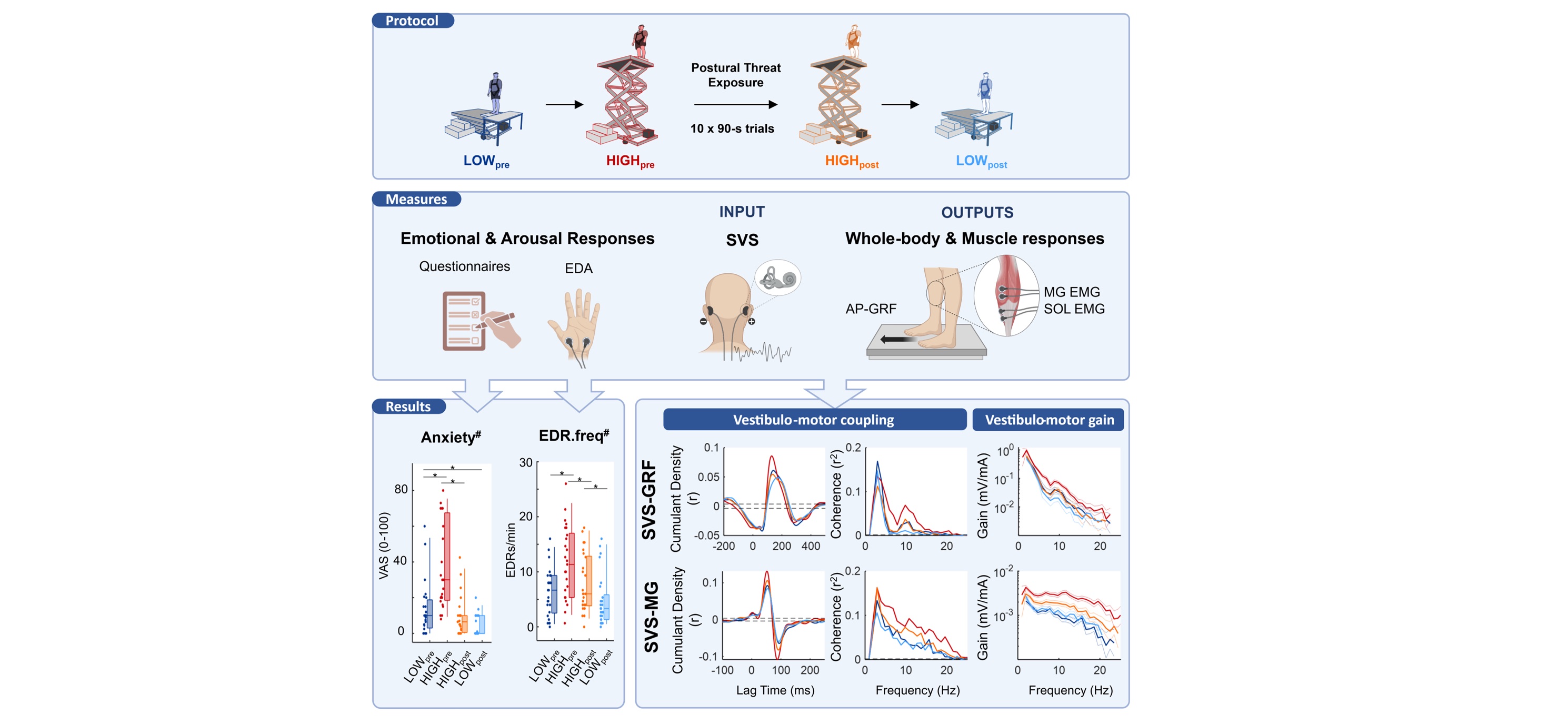
A newly published study in the Journal of Physiology, by co-first authors Dr. Martin Zaback and Solenne Villemer, demonstrates that emotional and arousal states can modulate balance responses evoked by the vestibular system. This research was conducted in Dr. Mark Carpenter’s Lab in collaboration with Dr. Tim Inglis and Dr. Kyle Missen.
The researchers had participants stand at the edge of a 3.2-meter high platform, which triggers significant anxiety, and arousal in healthy young adults. To examine vestibular-motor responses, participants received stochastic vestibular stimulation (SVS) – an electrical current applied behind the ears – while researchers measured their reactions through lower leg muscle activity and ground reaction forces beneath the feet. This approach allowed them to quantify how vestibular signals are transformed into balance corrective adjustments.
Previous findings from Dr. Carpenter's Lab showed that vestibular-motor responses are facilitated when first exposed to height. By repeatedly exposing participants to the same postural threat, this new study reveals that vestibular-motor responses diminish alongside anxiety levels as participants become more comfortable with the height, demonstrating that vestibular-motor responses are coupled to emotional and arousal states rather than to the physical threat itself.
These findings open the door to promising clinical applications by suggesting that treatments focused on reducing anxiety could improve balance control in patients with anxiety-vestibular interactions, such as Persistent Postural-Perceptual Dizziness (PPPD).
In an exciting development, this study was recently featured in a perspective piece by Pierre-Paul Vidal titled ‘Motor control or the art of betting’ in The Journal of Physiology. A prominent researcher in the field of motor control and vestibular function, Vidal highlights how this research supports the view that postural control is not merely a series of reflexes. Instead, he describes it as "a question of ultra-rapid bets" made by the nervous system to assess risks and select appropriate motor responses – processes that are heavily influenced by our emotional state.
Want to learn more? Read the full research article here or explore Vidal’s perspective here.

This publication marks Martin Zaback's final study from his PhD work and Solenne Villemer's first published research from her MSc, both completed under Dr. Carpenter's supervision at UBC. Martin is now pursuing his research journey as a postdoctoral fellow at Temple University (Philadelphia, US), while Solenne just graduated with her master’s degree this spring.